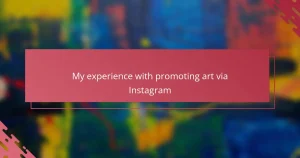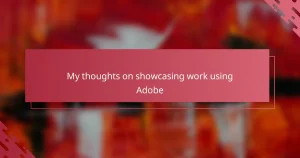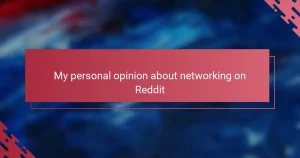Key takeaways
- An illustrator portfolio is a curated collection that reflects your unique voice, style, and artistic journey, crucial for making a memorable impression.
- Pinterest is an effective platform for showcasing art due to its focus on discovery, long-lasting visibility of pins, and organized presentation options.
- Utilizing a Pinterest Business Account provides access to valuable analytics, helping track performance and audience engagement, which can guide marketing strategies.
- Consistency, authenticity, and patience are key in marketing; regular updates and connecting with your audience’s interests foster deeper relationships over time.
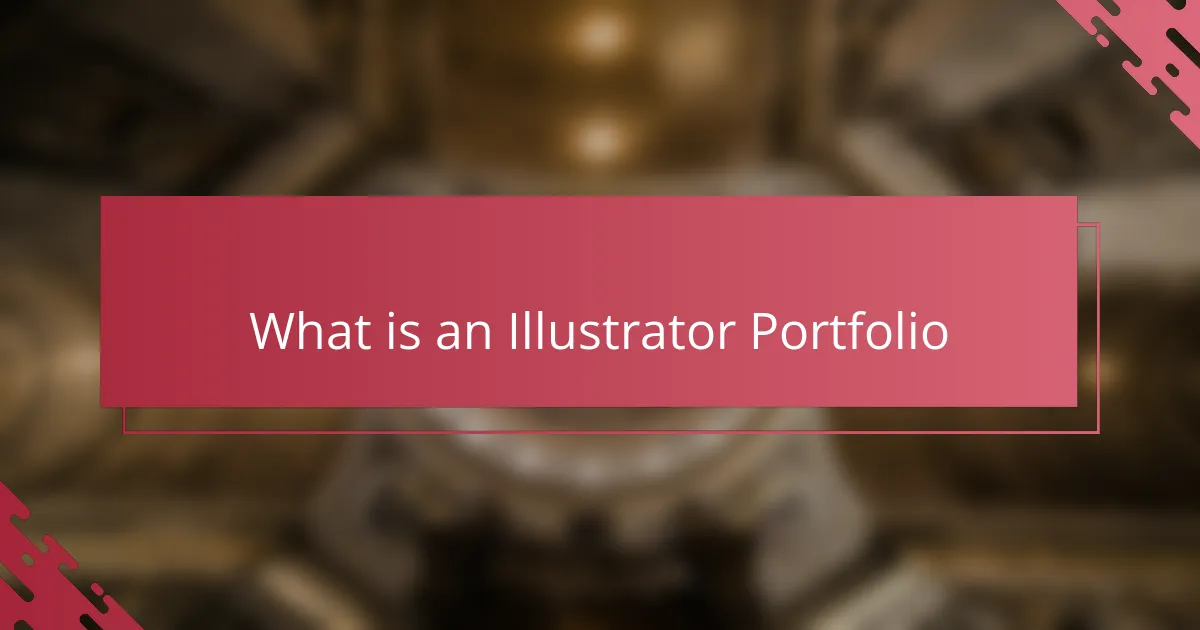
What is an Illustrator Portfolio
An illustrator portfolio is more than just a collection of drawings—it’s a visual story of your creative journey. When I first put mine together, I realized it’s like handing someone a window into how I see the world and express ideas through art. Have you ever thought about how your best works could speak for you even before you say a word?
This portfolio serves as your professional identity, showcasing your style, versatility, and skills. From my experience, it’s essential to include pieces that truly represent your unique voice, not just everything you’ve ever created. After all, isn’t quality more compelling than quantity when you want to make a memorable impression?
I also see an illustrator portfolio as a tool for connection—it invites potential clients or collaborators to understand your perspective and imagine what you can bring to their projects. It made me realize how powerful curated visuals are in opening doors and starting conversations in the creative industry. Wouldn’t you want your work to do the same for you?
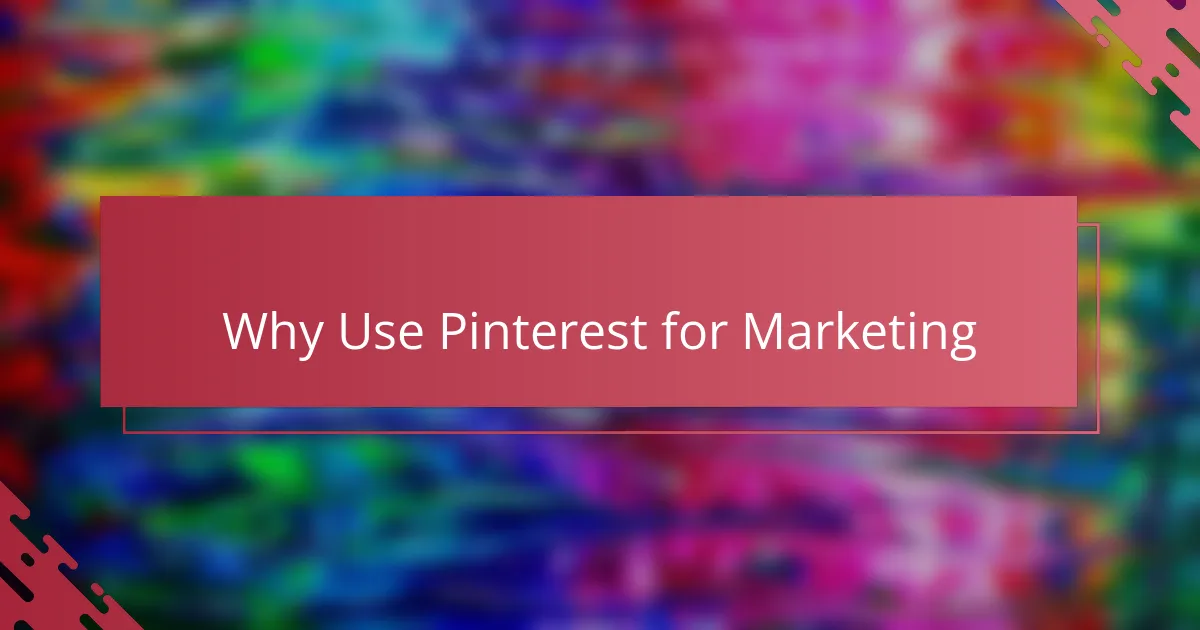
Why Use Pinterest for Marketing
Pinterest felt like a natural choice for marketing my portfolio because it’s a platform built entirely around discovery and inspiration. I noticed early on that people come here not just to browse, but to actively seek out creative ideas, which means my work finds an audience already interested in visual storytelling. Have you ever noticed how Pinterest’s visual grid makes every image pop? That’s the perfect stage for art to shine.
What I found truly powerful is Pinterest’s longevity. Unlike other social media where posts disappear quickly, pins keep circulating and attracting views over time. It felt encouraging to see my artwork gain traction weeks or even months after I first pinned it. Isn’t that the kind of long-term visibility every artist dreams about?
Another reason I stuck with Pinterest is how it naturally organizes content. Creating boards based on themes or projects turned out to be a great way to showcase different styles and ideas in an accessible format. I often ask myself, wouldn’t it be great if potential clients could browse my portfolio just like they browse inspiration, clicking through genres and moods effortlessly? Pinterest made that possible.
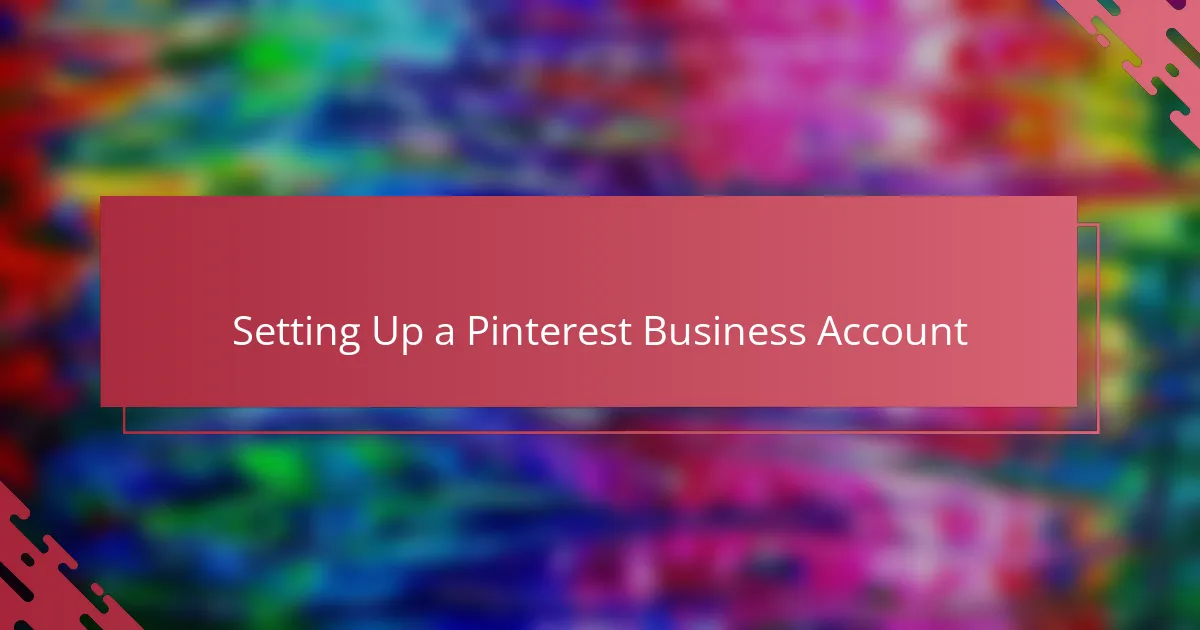
Setting Up a Pinterest Business Account
Setting up a Pinterest Business Account was one of those moments where I realized just how much intention goes into marketing beyond simply sharing art. The process was straightforward—I simply converted my personal profile, which already had some pins, into a business account. Have you ever wondered why that small switch matters? It instantly unlocked tools designed specifically to track how my portfolio was performing.
One thing I appreciated was the access to Pinterest Analytics right away. Being able to see which pins drew more attention and what kind of audience interacted with my work felt like having a backstage pass to my own marketing strategy. It gave me a sense of control and insight I hadn’t experienced on other platforms. For me, this data wasn’t just numbers; it was a guide to understanding my audience’s tastes and refining how I presented my portfolio.
I also had to make sure my profile felt professional yet authentic, which meant carefully crafting my bio and linking directly to my portfolio website. That little step made a big difference because it created a seamless path for anyone interested to explore my work further. It got me thinking, how often do we overlook these small details that ultimately build trust and invite deeper connections? Setting up the business account was the first real investment in that direction.
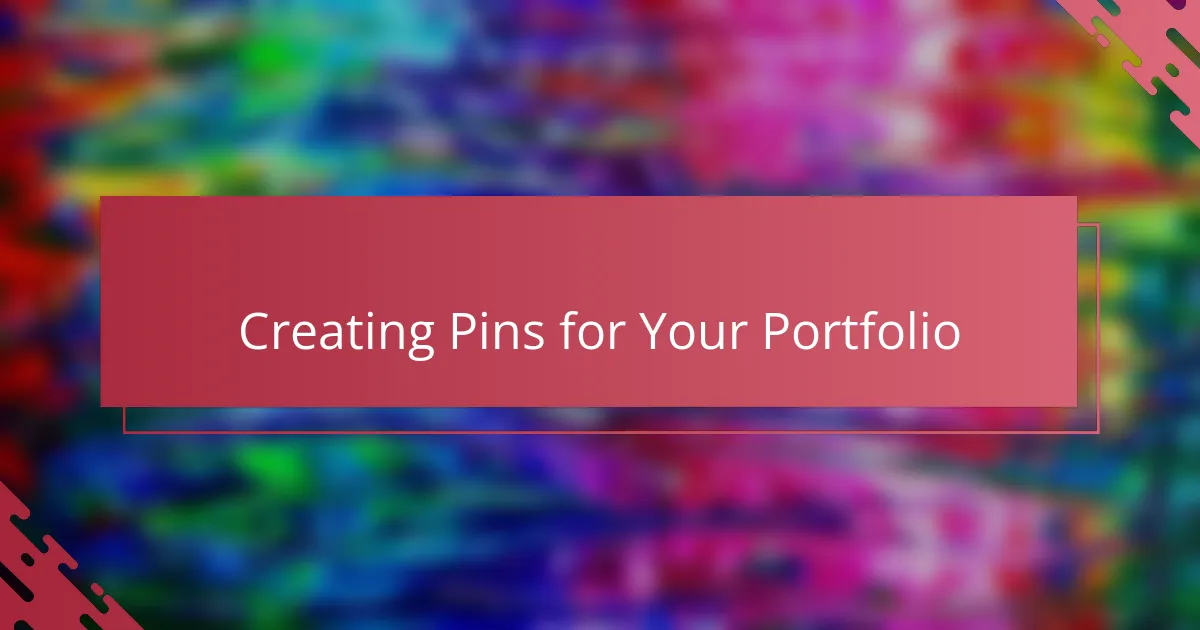
Creating Pins for Your Portfolio
Creating pins for your portfolio felt like an art form in itself. I realized early on that each pin needed to tell a mini story about the artwork—whether that meant showing a close-up of my brushwork or pairing the image with a catchy title. Have you ever thought about how a simple image can spark curiosity and invite someone to explore further?
What worked best for me was experimenting with different pin formats: vertical images performed better because they take up more space in feeds and naturally grab attention. Adding descriptive keywords in the pin descriptions also made a noticeable difference. I found myself asking, isn’t it fascinating how a few well-chosen words can connect your visuals to exactly the right audience?
I also made sure to mix my portfolio pins with process shots and behind-the-scenes glimpses. Sharing the story behind a piece didn’t just humanize my work; it created engagement and made viewers feel like they were part of the creative journey. From my experience, that little connection can turn a casual browser into a loyal follower or client. Wouldn’t you want your pins to build that kind of relationship too?
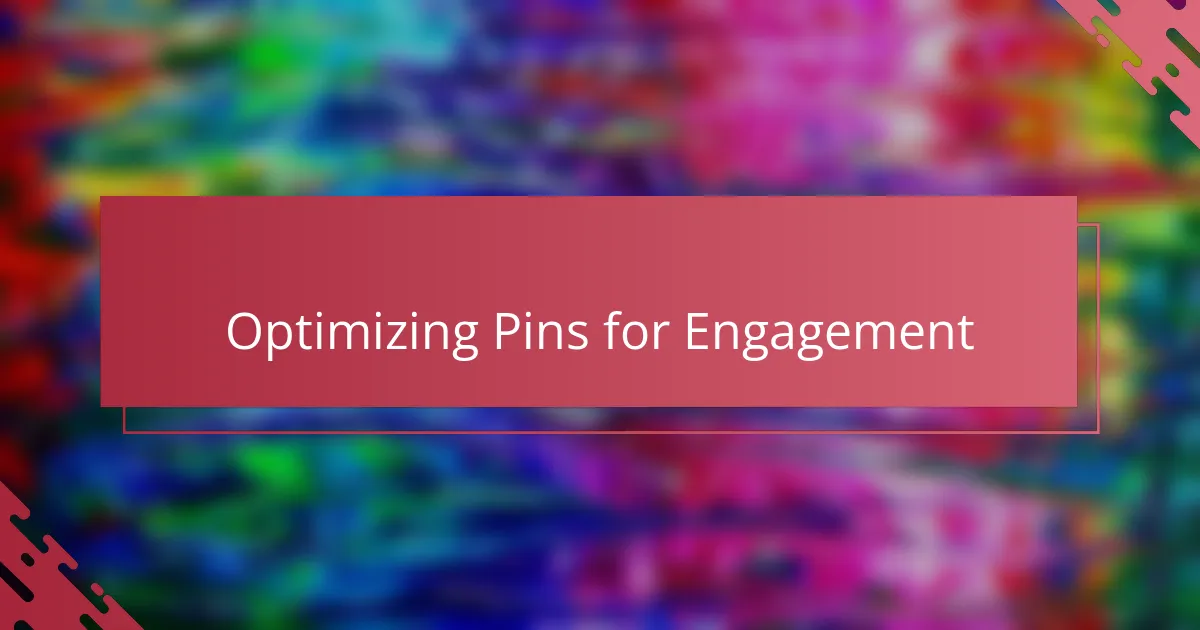
Optimizing Pins for Engagement
Optimizing pins for engagement was a game-changer in how my portfolio reached people. I learned that clear, captivating images paired with concise, keyword-rich descriptions made all the difference. Have you noticed how a well-worded description can make you stop scrolling and actually click?
One thing I experimented with was timing—pinning when my audience was most active led to more saves and repins, which helped my work spread organically. It felt like tuning into the rhythm of Pinterest’s community rather than just broadcasting blindly. Isn’t it rewarding when your art finds its way to the right eyes naturally?
I also paid close attention to the little details, like using bold text overlays and consistent branding on my pins. While that might seem subtle, it created a memorable visual style that made my work instantly recognizable. From my experience, those small touches build trust and encourage people to engage more deeply with your pins over time. Wouldn’t you agree that consistency gives your portfolio a professional edge?
![]()
Tracking Performance on Pinterest
When I first dove into tracking my portfolio’s performance on Pinterest, I was surprised at how much detail the analytics provided. Seeing which pins got the most clicks and saves helped me understand what truly resonated with viewers. Have you ever felt that thrill when a specific artwork suddenly gains traction? It’s like getting a direct nod from your audience.
One feature I found invaluable was tracking audience demographics and interests. This insight felt like having a backstage pass to not just who was looking at my work, but why they were drawn to it. It made me rethink how I crafted my pins, tailoring content to spark more meaningful engagement. Isn’t it amazing how data can guide creativity instead of stifling it?
Monitoring performance also became a balancing act between numbers and intuition. While it’s tempting to chase metrics, I’ve learned to listen to what the analytics say without losing my personal touch. It’s a bit like holding a conversation with your followers—tracking their preferences while staying true to your own artistic voice. How do you strike that balance in your marketing? For me, it’s an ongoing journey of learning and adapting.
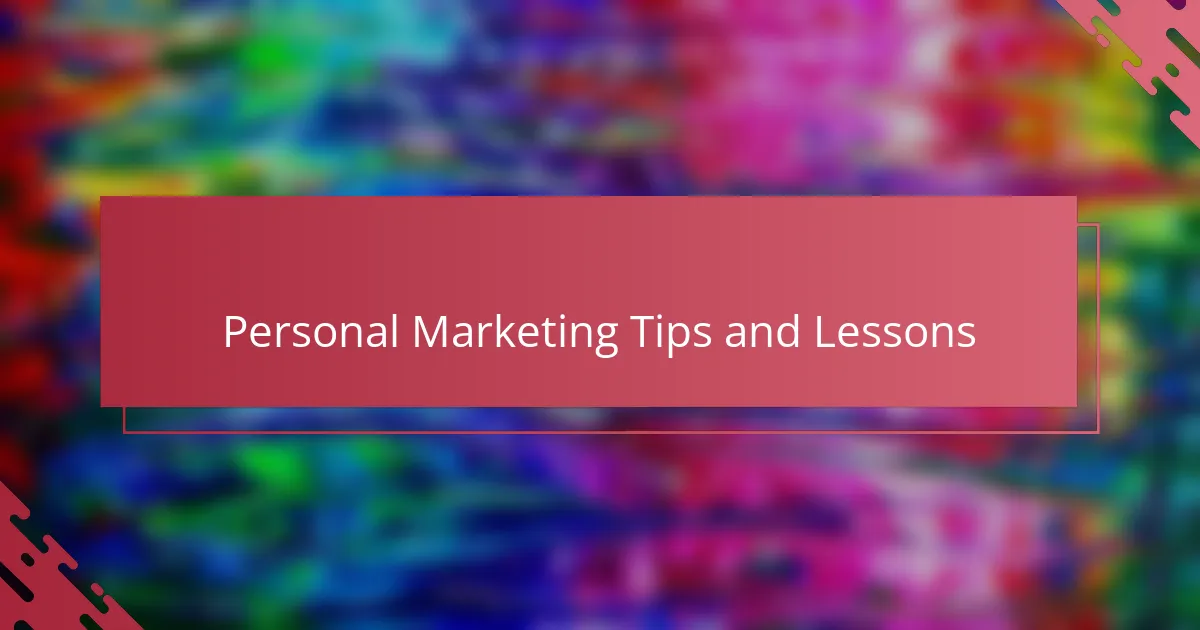
Personal Marketing Tips and Lessons
One lesson I learned early on is that marketing your portfolio isn’t just about blasting your work everywhere—it’s about thoughtful consistency. I found that regularly updating my Pinterest boards with fresh content, even if just a few pins at a time, kept my audience engaged and showed that my creative journey was ongoing. Have you ever noticed how a steady drip of new work feels more inviting than a sudden flood of images?
Another tip I can’t stress enough is the importance of authenticity. When I shared pieces that truly reflected my style and creative values, instead of trying to chase trends, I connected with an audience that valued my voice. It made me realize marketing isn’t just promotion; it’s sharing a part of yourself. Isn’t that the core of any meaningful creative relationship?
Finally, patience plays a huge role. At first, I expected immediate attention, but Pinterest’s slow-burning nature taught me to trust the process. Watching my pins gain traction over weeks reminded me that building an audience—and opportunities—takes time. Have you ever felt that mix of frustration and hope while waiting to see if your work resonates? It’s all part of the journey.
